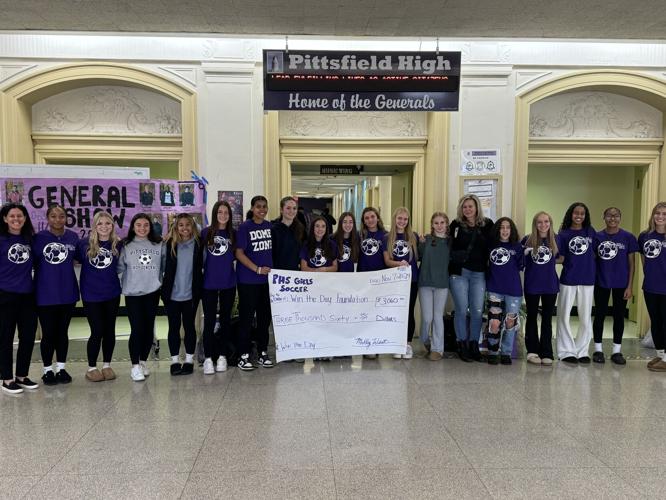
FORESTVILLE — As is their tradition, Scott Stangeland of Spicer and his dad, Virgil Stangeland of New London, come to the Preston area for a few days in October for trout fishing, a tradition they followed earlier this week. “We’ve been doing this, I’m thinking, close to 20 years,” the son said Tuesday before fishing in Forestville/Mystery Cave State Park. “It’s something we enjoy very much and love doing it together.
” They made plans early and were going to come, regardless of weather. ADVERTISEMENT This year, they got lucky and happened to choose a time when the weather was in its last days of what felt like summer, so water was cool but not cold and the air splendid. But it was when they drove around the park that they really got lucky because they bumped into Dan Michener who had guided Scott Stangeland in the past.
Michener is a local trout fishing legend; he changed his plans and helped the father-son duo. Scott Stangeland was going to fish with a Pink Floyd, a nymph, which is a general name for anything that imitates bugs in the bottom of the stream, not that any known bugs have pink metal heads and soft hackle bodies. The Stangelands were looking to fish in the park because it’s one of three parks — Whitewater and Beaver Creek Valley are the other two — and five cities (Preston, Lanesboro, Spring Valley, Chatfield and Rushford) where catch-and-release fishing is allowed until Jan.
1. Michener suggested a trico emerger that Stangeland described as “like a bit of belly button fuzz on a hook.” He didn’t think trout could see it, but one did and he soon set the hook on nice brown trout.
“Not very big, but it was fun,” he said. “I never would have caught that fish without Dan.” His dad fished nearby and using a fly Michener suggested, matched his son with a brown about the same size and went one better with a second brown.
With that, the two said it was time to head back to Lanesboro, lunch and maybe more fishing. ADVERTISEMENT I was left to fish on a day I chose not by tradition but because it was warm enough for a last day wet wading. I told Michener I was thinking of trying wet flies but he said he tried them early but many hooked up leaves and not fish.
But it was a fantastic time to fish. “The fish is getting good looking, spawning colors,” he said. He went to nymphs because they are a go-to system no matter what.
With so little rain, “it’s a challenge, low water and spooky,” he said. Another thing — because it’s spawning, anglers should avoid any riffle with redds (gravel nests where fish lay their eggs), he said. Instead, fish above the riffle, Michener said.
Vaughn Snook agreed. “Trout are in different places because water temperatures are dropping and they are beginning to spawn,” said the Department of Natural Resources fisheries biologist in Lanesboro. He suggested looking at mouths of small streams or riffles in larger streams.
But he did say that, while reproduction is scarcely a problem, it’s still better to avoid redds. Also, water temperatures aren’t going to limit when we fish this time of year, while in the heat of summer, they might get too high to fish ethically. “It has been said that gold/yellow is a good color for brown trout when they are getting territorial for spawning and that red is a good color for brook trout during the same,” he said.
Unfortunately, I didn’t take Michener’s wet-fish wisdom to heart so I tried them in another part of the park, and had to put up with hooked leaves. It’s been very good in the past but on Tuesday, it was too low, clear and I saw no fish. I moved to a deep run which is where Michener said trout should be and where I’m more comfortable.
I soon had a hit and miss, then landed one. By then, it was getting late and I went to where the Stangelands fished. ADVERTISEMENT Early evening was calm, and the Root River water at first felt good.
Trout, however, weren’t hitting and I had to work hard to finally land one, about 10 inches long. Then a few trout began rising and one jumped out of the water. I put on a dry fly, hoping to end the day, and my summer fishing, with a trout wallopping a fly on top.
As the sun dropped behind the hills, my feet were getting cold and it was getting late. I reeled in only to have a trout, perhaps a big one, smash that fly. I was so surprised I didn’t set the hook right and in a few seconds it was gone.
But oh that memory. You know, my feet weren’t THAT cold and it wasn’t getting THAT late. I just kept fishing.
Catching a big trout on a small dry fly would have been a perfect ending to a summer of imperfect fishing. Nothing except growing darkness. ADVERTISEMENT Leaving with the memory of a big dry-fly trout would have been great.
But leaving with the urge to go back for more wasn’t so bad. Good-bye summer trout fishing. John Weiss has written and reported about Outdoors topics for the Post Bulletin for more than 45 years.
He is the author of the book "Backroads: The Best of the Best by Post-Bulletin Columnist John Weiss.”.













